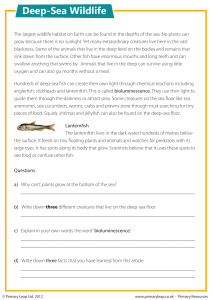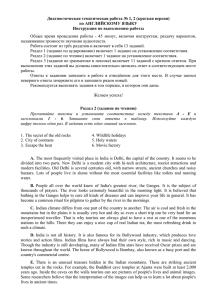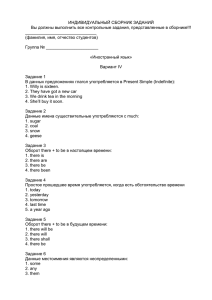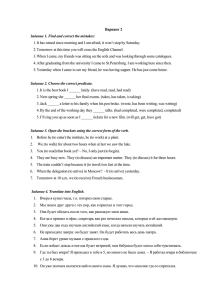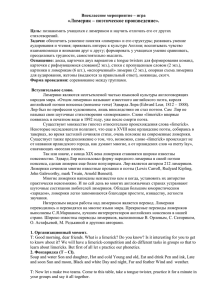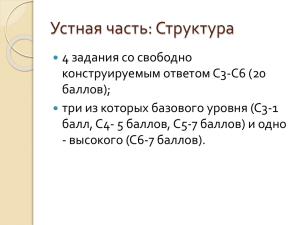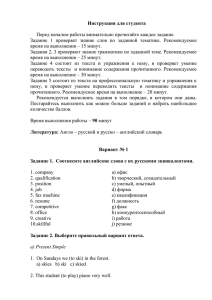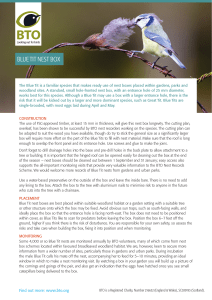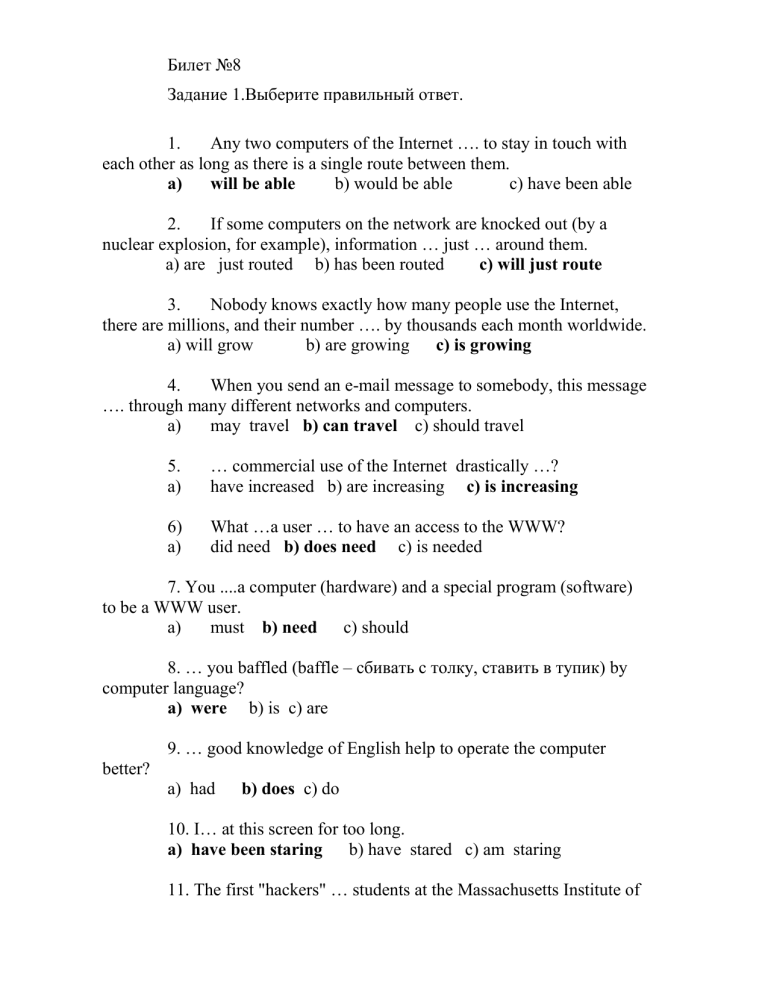
Билет №8 Задание 1.Выберите правильный ответ. 1. Any two computers of the Internet …. to stay in touch with each other as long as there is a single route between them. a) will be able b) would be able c) have been able 2. If some computers on the network are knocked out (by a nuclear explosion, for example), information … just … around them. a) are just routed b) has been routed c) will just route 3. Nobody knows exactly how many people use the Internet, there are millions, and their number …. by thousands each month worldwide. a) will grow b) are growing c) is growing 4. When you send an e-mail message to somebody, this message …. through many different networks and computers. a) may travel b) can travel c) should travel 5. a) … commercial use of the Internet drastically …? have increased b) are increasing c) is increasing 6) a) What …a user … to have an access to the WWW? did need b) does need c) is needed 7. You ....a computer (hardware) and a special program (software) to be a WWW user. a) must b) need c) should 8. … you baffled (baffle – сбивать с толку, ставить в тупик) by computer language? a) were b) is c) are 9. … good knowledge of English help to operate the computer better? a) had b) does c) do 10. I… at this screen for too long. a) have been staring b) have stared c) am staring 11. The first "hackers" … students at the Massachusetts Institute of Technology (MIT) who belonged to the TMRC (Tech Model Railroad Club). a) have been b) were c) are 12. How many successful crimes …. undetected is anybody's guess. a) may have gone b) have been gone c) have gone 13. Who … the first automatic computer ? a) did invent b) invented c) invents 14. Banks that … after-hours or remote banking through cashdispensing terminals may find themselves unwillingly subsidizing organized crime. a) offer b) will offer c) are offering 15. There.....aids for millennia. a) calculate b) have been calculating c) are calculating 16. It's easy for computer crimes to go undetected if no one checks up on what the computer … a) does b) is doing c) had done 17. How … you formulate the credo of the modern generation of hackers? a) must formulate b) can formulate c) ought to formulate 18. One of the legends says that hackers…. under the influence of "crackers" — the people who loved to talk on the phone at somebody else's expense. a) have changed b) changed c) was changing 19. If your PC … easy to access no one can guarantee what'll happen to your computer ? a) was b) is c) had been 20. … you ever … to break into else’s computer? a) have tried b) had tried c) will have tried 21. What … a computer system..? a) is threatening b) does threaten c) threatens 22. How … you avoid getting viruses? a) may b) can c) need Задание 2.Сделать задание к тексту. One of the most mysterious things in nature is the ability of certain creatures to find their way home sometimes from great distances. Birds are not the only ones who can do this. Bees, eels and salmon are able to return to a particular place after long journeys too. Most migrations take place between breeding grounds and regions where animals feed. For some animals, such as the lemming, the move is a one-way trip. Some scientists call this movement emigration, because these animals never return to their homes. For other animals, such as birds, the migration includes are turn trip home. Birds move in periodic migrations, or at regular times during their lives, and often to the same place year after year. Many experiments have been made with birds in an attempt to find out what guides them on their way home. In one case, seven swallows were taken 400miles from home. When they were set free, five of them returned to their nests. In another case, a certain kind of sea bird was taken from its nest off the Welsh coast to Venice by plane. When it was released, it made its way home to its nest, a distance of 930 miles if it flew in a straight line. (20) Migrating birds offer an even more amazing example of this ability There are swifts and house martins that migrate from England to South Africa every year. They not only return to England the next spring, but many of them come back to nest in the very same house where they nested the year before. They fly the incredible distance of 6,000 miles, one way. Certain types of butterflies migrate, too, and find their way home over long distances. (27) In the tropics one can sometimes see great mass flights of butterflies all flying steadily in one direction. They may go a thousand miles and more and then return again in another season. Despite all the efforts that have been made to explain how these creatures find their way home, we still have no sure explanation. Since many of the birds flyover great bodies of water, we can't explain it by saying they use landmarks to guide them. Just to say they have an "instinct" doesn't really explain the right conditions. The reason they do it may be to obtain food or to reproduce under the right conditions.(37) But the signals and guideposts they use on their flights are still a mystery to man. 1. What does this passage mainly discuss? (A) How migratory creatures find their way home (B) Popular places for migration (C) Why animals migrate (D) The emigration patterns of butterflies 2. According to paragraph 2, the main difference between animal emigration and animal migration is (A) the breeding places (B) the route taken (C) the time spent (D) the final destination 3. In paragraph 5 the author mentions butterflies in order to (A) include the tropics in the discussion of migration (B) give another example of migratory creatures (C) show that these small flying creatures don't get lost (D) show that butterflies are sturdy creatures 4. In line 20 the phrase "this ability" refers to (A) the ability to fly without stopping (B) the ability to build nests year after year (C) the ability to find their way home (D) the ability to fly in a straight line 5. According to the passage, swallows travelling from South Africa to England (A) cover a relatively short distance (B) often return to precisely the same point each year (C) may not return for a number of years (D) rebuild the same type of nest in similar locations each spring 6. The word "mass" in line 27 is closest in meaning to (A) visible (B) voluntary (C) rapid (D) large 7. The word "signals" in line 37 is closest in meaning to (A) indications (B) instincts (C) radar (D) maps 8. The author suggests that using "instinct" to explain the ability of animals to return home during migration is (A) absurd (B) incomplete (C) inaccurate (D) reliable 9. Which of the following devices does the author use to present the information in the passage? (A) Support through exemplification (B) Narration (C) Cause and effect (D) Comparison and contrast 10. The attitude of the author toward the ability of certain creatures to find their way home may best be expressed by which of the following? (A) Confused (B) Sympathetic (C) Admiring
